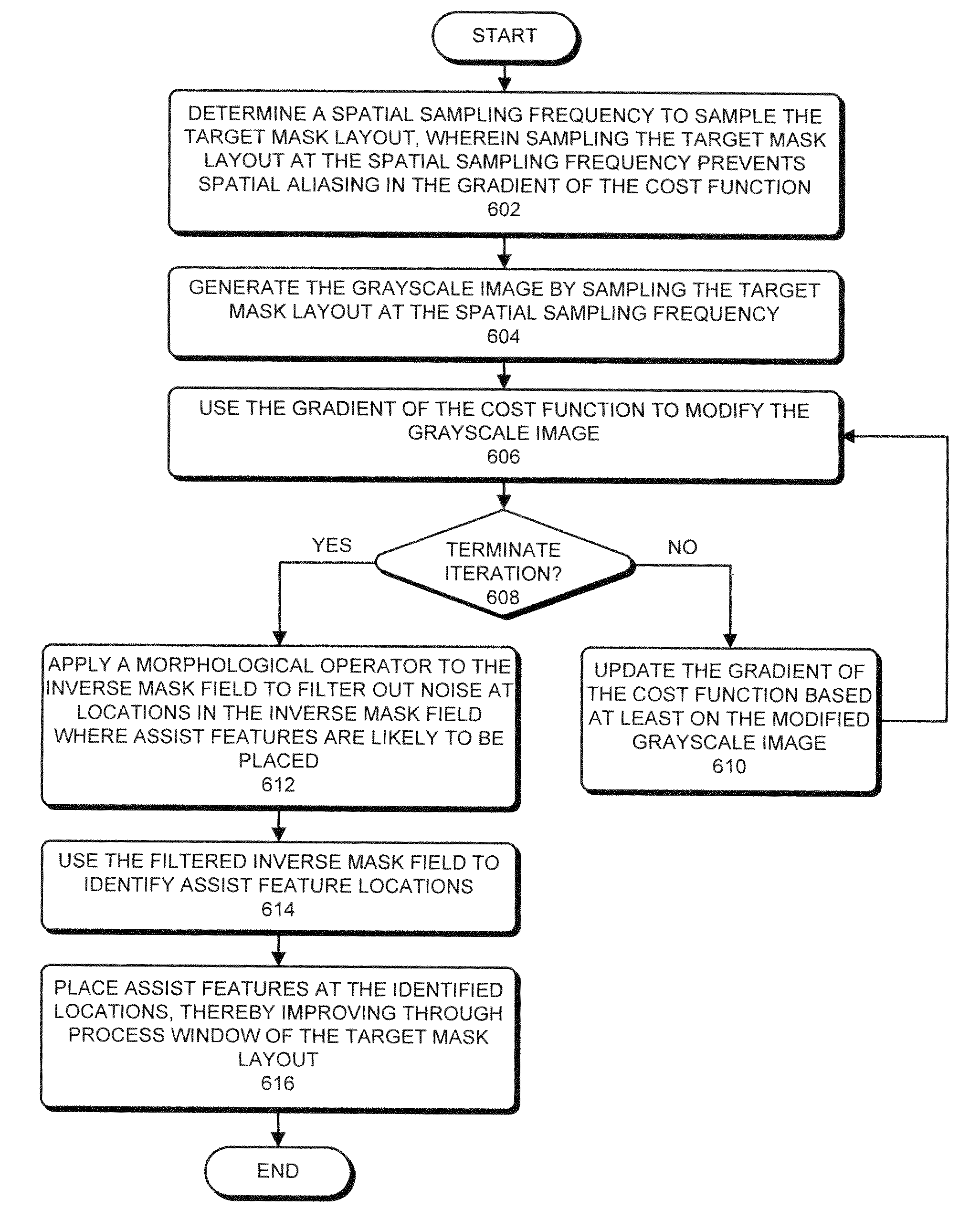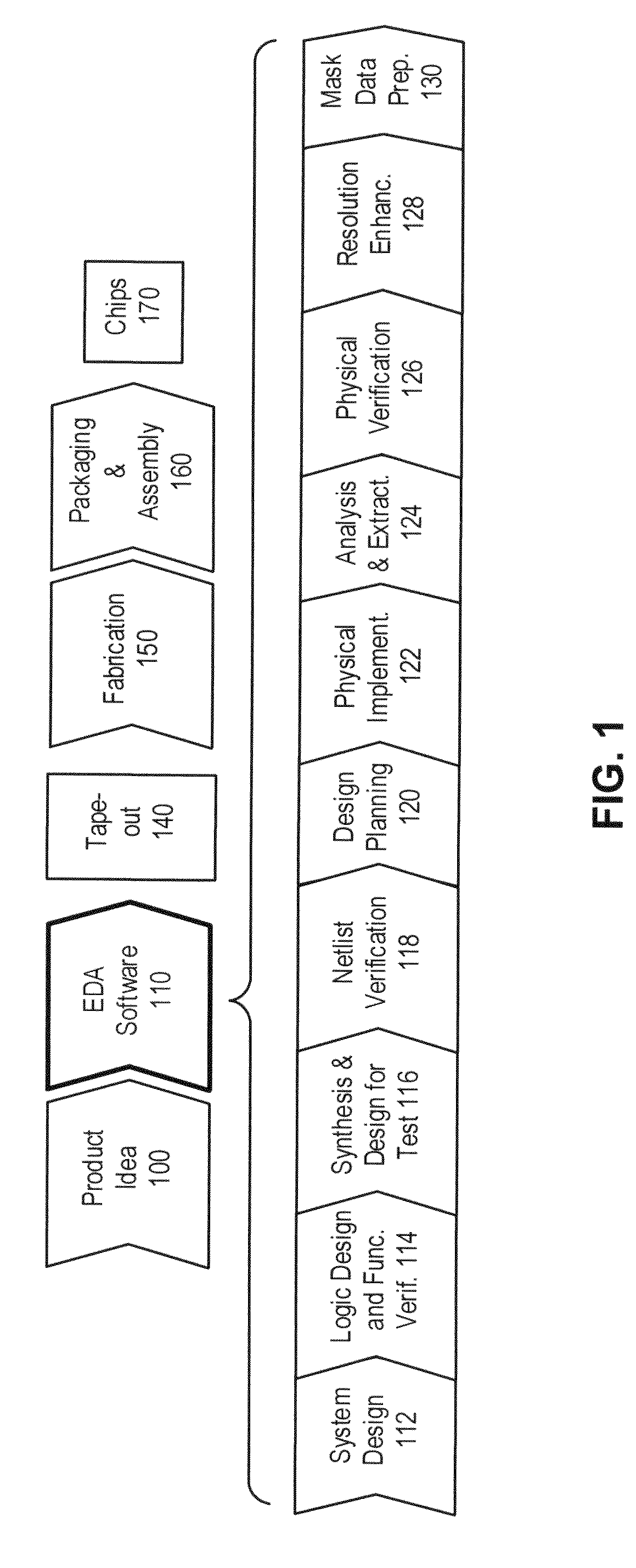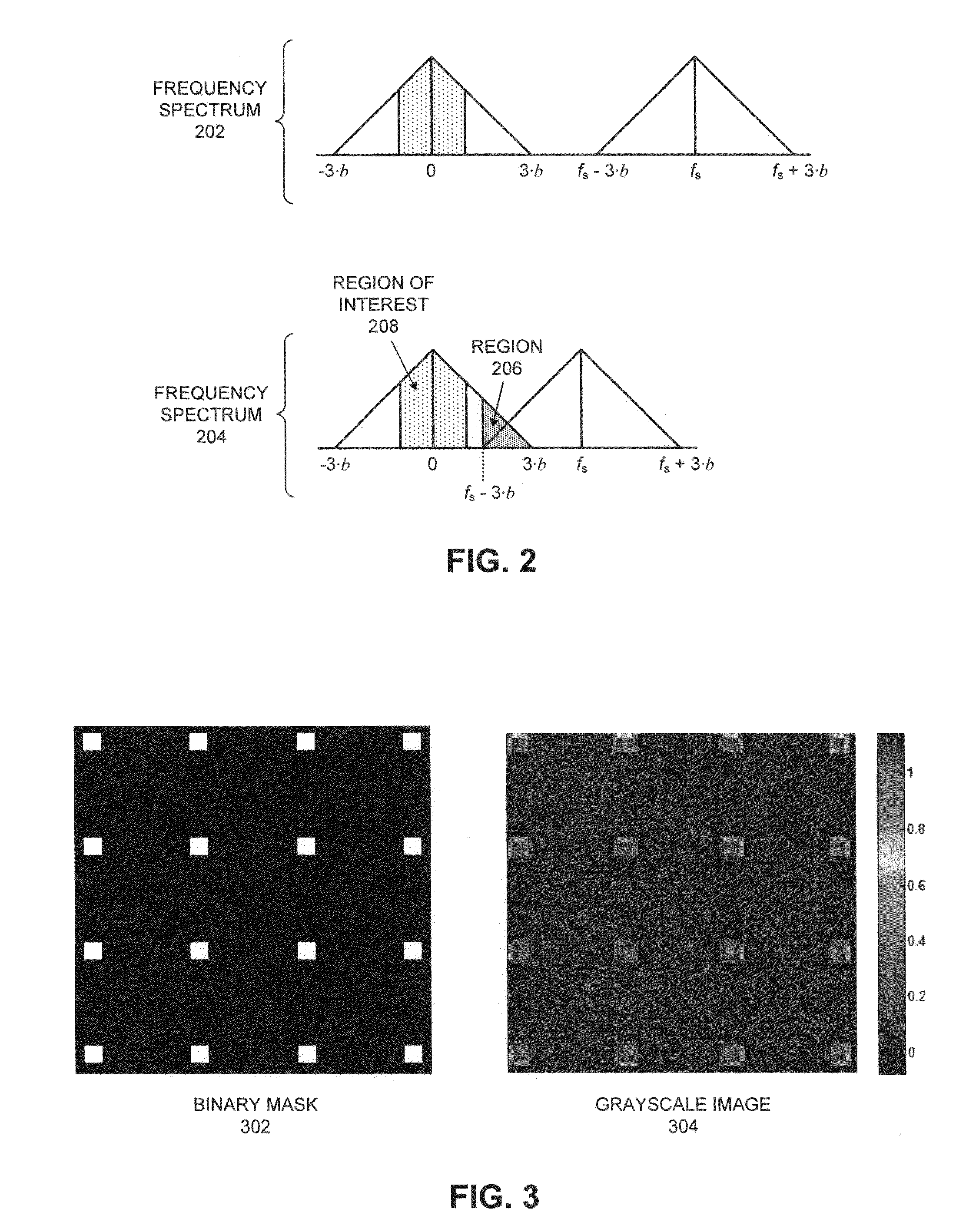Model-based assist feature placement using inverse imaging approach
a technology of model-based assist and feature placement, applied in the field of electronic design automation, can solve the problems of difficult management, preventing designers from being able to achieve the best device performance, and missing or sub-optimal placement and/or dimensioning of assist features
- Summary
- Abstract
- Description
- Claims
- Application Information
AI Technical Summary
Benefits of technology
Problems solved by technology
Method used
Image
Examples
Embodiment Construction
[0020]The following description is presented to enable any person skilled in the art to make and use the invention, and is provided in the context of a particular application and its requirements. Various modifications to the disclosed embodiments will be readily apparent to those skilled in the art, and the general principles defined herein may be applied to other embodiments and applications without departing from the spirit and scope of the present invention. Thus, the present invention is not limited to the embodiments shown, but is to be accorded the widest scope consistent with the principles and features disclosed herein.
Integrated Circuit (IC) Design Flow
[0021]FIG. 1 illustrates various stages in the design and fabrication of an integrated circuit in accordance with an embodiment of the present invention.
[0022]The process can start with a product idea (step 100) which can be realized using an integrated circuit that is designed using an EDA process (step 110). After the inte...
PUM
 Login to View More
Login to View More Abstract
Description
Claims
Application Information
 Login to View More
Login to View More - R&D
- Intellectual Property
- Life Sciences
- Materials
- Tech Scout
- Unparalleled Data Quality
- Higher Quality Content
- 60% Fewer Hallucinations
Browse by: Latest US Patents, China's latest patents, Technical Efficacy Thesaurus, Application Domain, Technology Topic, Popular Technical Reports.
© 2025 PatSnap. All rights reserved.Legal|Privacy policy|Modern Slavery Act Transparency Statement|Sitemap|About US| Contact US: help@patsnap.com



